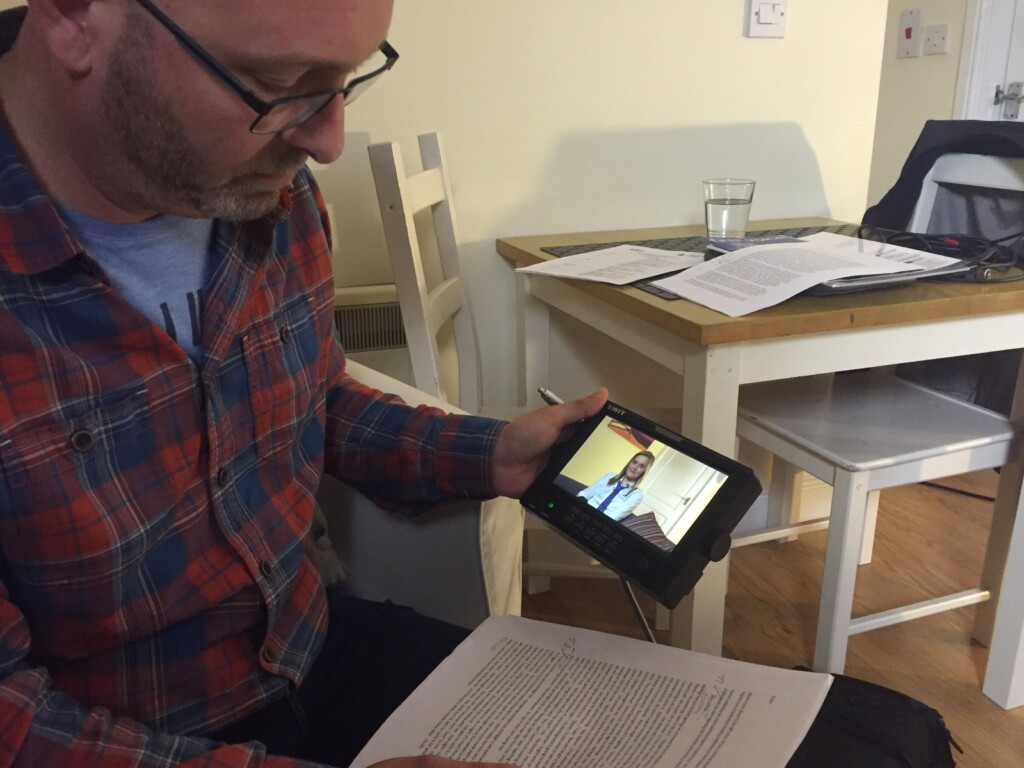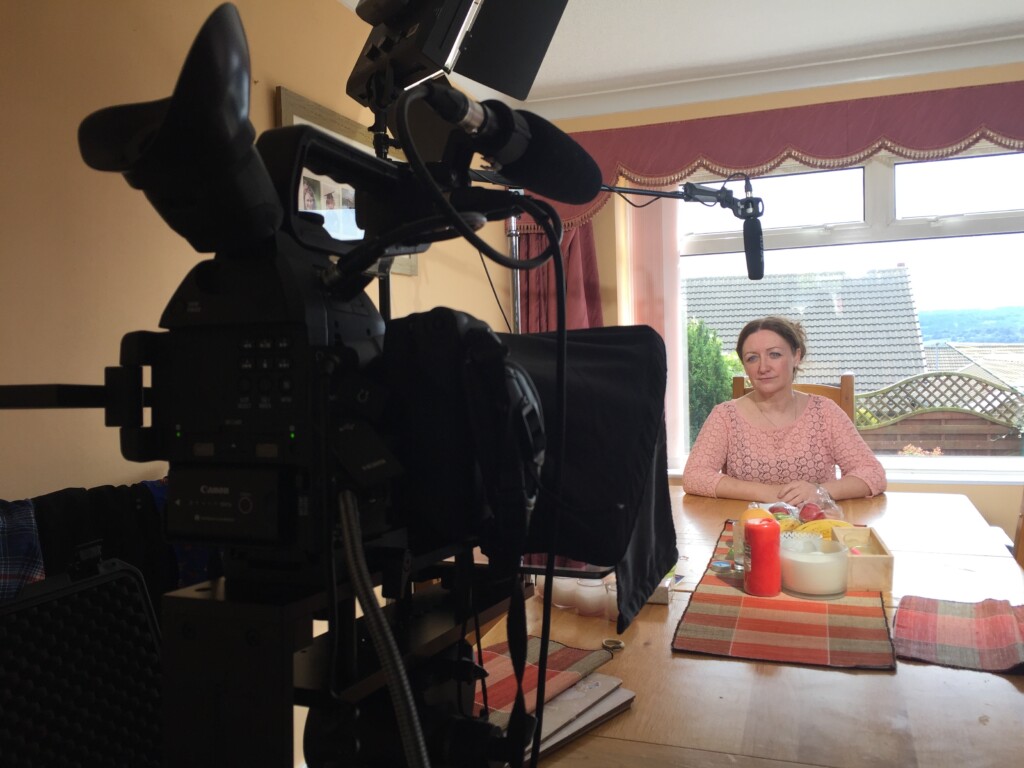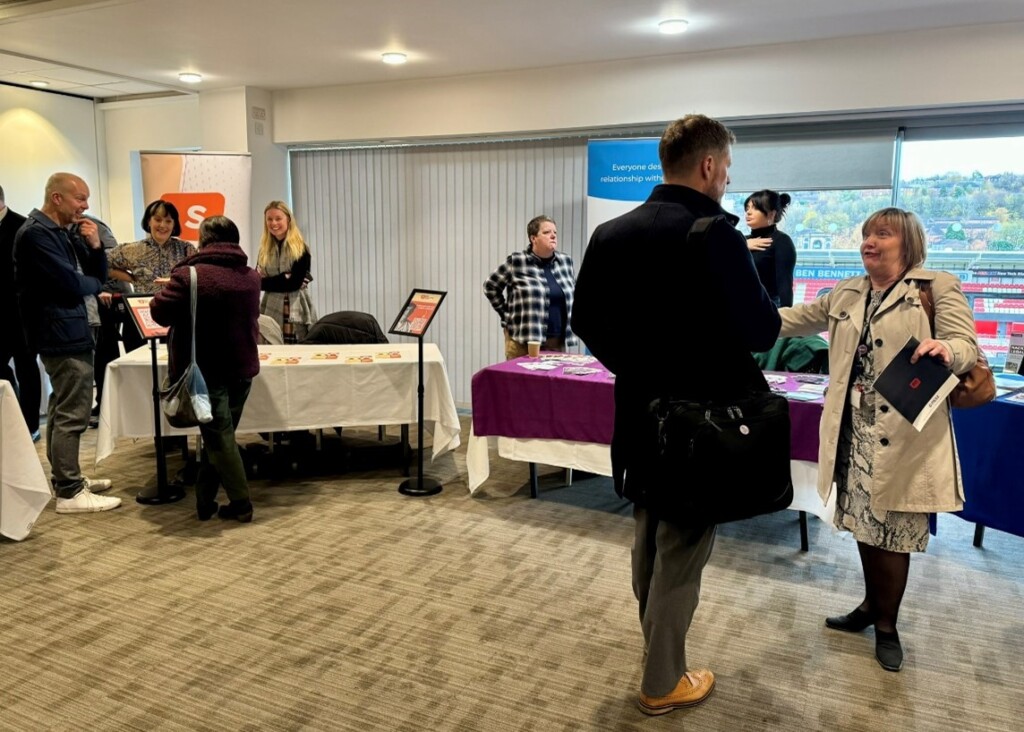Real Safeguarding Stories is on the move!
Why did we move to YouTube, and what does the future hold?
Real Safeguarding Stories is on the move!
Why did we move to YouTube, and what does the future hold?
Real Safeguarding Stories is on the move!
Why did we move to YouTube, and what does the future hold?
Real Safeguarding Stories is a unique film resource which provides a powerful stimulus to improve safeguarding practice in organisations and communities. True survivor stories are brought to life by actors enabling professionals to connect with lived experiences of abuse and explore real solutions.
In this blog Chris Simes, Collingwood’s Chair and Director, will tell you everything about Real Safeguarding Stories, how it all began and how we use the power of storytelling today to help to create a society free from abuse, violence, and neglect.
Real Safeguarding Stories is a unique film resource which provides a powerful stimulus to improve safeguarding practice in organisations and communities. True survivor stories are brought to life by actors enabling professionals to connect with lived experiences of abuse and explore real solutions.
In this blog Chris Simes, Collingwood’s Chair and Director, will tell you everything about Real Safeguarding Stories, how it all began and how we use the power of storytelling today to help to create a society free from abuse, violence, and neglect.
Real Safeguarding Stories is a unique film resource which provides a powerful stimulus to improve safeguarding practice in organisations and communities. True survivor stories are brought to life by actors enabling professionals to connect with lived experiences of abuse and explore real solutions.
In this blog Chris Simes, Collingwood’s Chair and Director, will tell you everything about Real Safeguarding Stories, how it all began and how we use the power of storytelling today to help to create a society free from abuse, violence, and neglect.
How Did Real Safeguarding Stories Come About?
My ‘journey’ in safeguarding began in a unique way over a decade ago. We were regular contributors to Bradford Council’s training for elected members and had been often asked back because of our use of our memorable actor led scenarios. The council was keen to help members understand their responsibilities towards safeguarding in their work with members of the public.
The first training experience was to be focussed on domestic violence. To do something different, we opted for a carousel of video stations, where each member would view a filmed monologue about an aspect of domestic violence and then get advice from a resident expert. The team at Bradford Council kindly brokered three interviews with courageous volunteers who had experienced abuse, so that we could develop anonymous versions of their lived experience.

How Did Real Safeguarding Stories Come About?
My ‘journey’ in safeguarding began in a unique way over a decade ago. We were regular contributors to Bradford Council’s training for elected members and had been often asked back because of our use of our memorable actor led scenarios. The council was keen to help members understand their responsibilities towards safeguarding in their work with members of the public.
The first training experience was to be focussed on domestic violence. To do something different, we opted for a carousel of video stations, where each member would view a filmed monologue about an aspect of domestic violence and then get advice from a resident expert. The team at Bradford Council kindly brokered three interviews with courageous volunteers who had experienced abuse, so that we could develop anonymous versions of their lived experience.

How Did Real Safeguarding Stories Come About?
My ‘journey’ in safeguarding began in a unique way over a decade ago. We were regular contributors to Bradford Council’s training for elected members and had been often asked back because of our use of our memorable actor led scenarios. The council was keen to help members understand their responsibilities towards safeguarding in their work with members of the public.
The first training experience was to be focussed on domestic violence. To do something different, we opted for a carousel of video stations, where each member would view a filmed monologue about an aspect of domestic violence and then get advice from a resident expert. The team at Bradford Council kindly brokered three interviews with courageous volunteers who had experienced abuse, so that we could develop anonymous versions of their lived experience.

“I felt in equal parts shocked, overwhelmed, honoured, and inspired by her story“
“I felt in equal parts shocked, overwhelmed, honoured, and inspired by her story“
“I felt in equal parts shocked, overwhelmed, honoured, and inspired by her story“
Why ‘Real’ Stories?
My first interview with Anisha (not her real name) was one of the most emotionally moving and, if I’m honest, harrowing experiences I have had in my lucky, sheltered life. She endured years of abuse from her husband towards her and her children. I came out of the meeting a changed person. I felt in equal parts shocked, overwhelmed, honoured, and inspired by her story.
In writing the script I knew I had to communicate the complex emotional turmoil of being in that situation, the long-term devastating consequences, and the many missed opportunities to intervene by individuals and agencies at that time. But as I started writing, Anisha’s story simply wrote itself. This taught me to always go to the source when writing training or learning resources, and that lived experiences are more visceral than any fictional version of events.
Why ‘Real’ Stories?
My first interview with Anisha (not her real name) was one of the most emotionally moving and, if I’m honest, harrowing experiences I have had in my lucky, sheltered life. She endured years of abuse from her husband towards her and her children. I came out of the meeting a changed person. I felt in equal parts shocked, overwhelmed, honoured, and inspired by her story.
In writing the script I knew I had to communicate the complex emotional turmoil of being in that situation, the long-term devastating consequences, and the many missed opportunities to intervene by individuals and agencies at that time. But as I started writing, Anisha’s story simply wrote itself. This taught me to always go to the source when writing training or learning resources, and that lived experiences are more visceral than any fictional version of events.
Why ‘Real’ Stories?
My first interview with Anisha (not her real name) was one of the most emotionally moving and, if I’m honest, harrowing experiences I have had in my lucky, sheltered life. She endured years of abuse from her husband towards her and her children. I came out of the meeting a changed person. I felt in equal parts shocked, overwhelmed, honoured, and inspired by her story.
In writing the script I knew I had to communicate the complex emotional turmoil of being in that situation, the long-term devastating consequences, and the many missed opportunities to intervene by individuals and agencies at that time. But as I started writing, Anisha’s story simply wrote itself. This taught me to always go to the source when writing training or learning resources, and that lived experiences are more visceral than any fictional version of events.
“Telling safeguarding stories based upon lived experiences of survivors“
“Telling safeguarding stories based upon lived experiences of survivors“
“Telling safeguarding stories based upon lived experiences of survivors“
How did Real Safeguarding Stories become what it is now?
Originally three simple videos were produced – Anisha’s, Fiona’s, and Tracey’s stories – delivered as monologues by actors. The live training with Bradford Council went well, but the videos, which at the time were on DVD, started to be shared like hotcakes and we found out that they were being used in all manner of training environments across Yorkshire. We only learned this when the sister of one of the actors, a teacher, was surprised to find her sister performing in a film in her own teacher training day at school!
The educational value of what we had made suddenly came to light. From that moment on, our mission was simple. Telling safeguarding stories based upon lived experiences of survivors of abuse in all its forms. Make it free. Let safeguarding professionals use them in training and community contexts to make victims’ voices count. Three videos turned into 30 something, and hundreds of thousands of online streams resulted. Awards followed, and I was lucky to celebrate with one of contributors, which was an extra special moment.

How did Real Safeguarding Stories become what it is now?
Originally three simple videos were produced – Anisha’s, Fiona’s, and Tracey’s stories – delivered as monologues by actors. The live training with Bradford Council went well, but the videos, which at the time were on DVD, started to be shared like hotcakes and we found out that they were being used in all manner of training environments across Yorkshire. We only learned this when the sister of one of the actors, a teacher, was surprised to find her sister performing in a film in her own teacher training day at school!
The educational value of what we had made suddenly came to light. From that moment on, our mission was simple. Telling safeguarding stories based upon lived experiences of survivors of abuse in all its forms. Make it free. Let safeguarding professionals use them in training and community contexts to make victims’ voices count. Three videos turned into 30 something, and hundreds of thousands of online streams resulted. Awards followed, and I was lucky to celebrate with one of contributors, which was an extra special moment.


How did Real Safeguarding Stories become what it is now?
Originally three simple videos were produced – Anisha’s, Fiona’s, and Tracey’s stories – delivered as monologues by actors. The live training with Bradford Council went well, but the videos, which at the time were on DVD, started to be shared like hotcakes and we found out that they were being used in all manner of training environments across Yorkshire. We only learned this when the sister of one of the actors, a teacher, was surprised to find her sister performing in a film in her own teacher training day at school!
The educational value of what we had made suddenly came to light. From that moment on, our mission was simple. Telling safeguarding stories based upon lived experiences of survivors of abuse in all its forms. Make it free. Let safeguarding professionals use them in training and community contexts to make victims’ voices count. Three videos turned into 30 something, and hundreds of thousands of online streams resulted. Awards followed, and I was lucky to celebrate with one of contributors, which was an extra special moment.

Why YouTube?
We initially created a website to house all the videos so anyone can stream them anytime. But YouTube has enabled us to do so much more. We have vastly increased the exposure of the videos to potential users. Many professionals search YouTube for resources and we wanted to ensure people could use them and rely on the streaming service to play and share. Also, accessibility was rightly becoming an issue, and we were thrilled to finally subtitle all the films which otherwise would have been very expensive and time consuming.
Lastly, we wanted to generate interest in developing more films and delivering live training sessions. We want organisations to adopt our approach to enhance their own training programmes by developing film content relevant to them, but that everyone can share. And to offer new services like Real Safeguarding Stories Live, where our incredible actors can deliver monologues in live training and conference settings.

Why YouTube?
We initially created a website to house all the videos so anyone can stream them anytime. But YouTube has enabled us to do so much more. We have vastly increased the exposure of the videos to potential users. Many professionals search YouTube for resources and we wanted to ensure people could use them and rely on the streaming service to play and share. Also, accessibility was rightly becoming an issue, and we were thrilled to finally subtitle all the films which otherwise would have been very expensive and time consuming.
Lastly, we wanted to generate interest in developing more films and delivering live training sessions. We want organisations to adopt our approach to enhance their own training programmes by developing film content relevant to them, but that everyone can share. And to offer new services like Real Safeguarding Stories Live, where our incredible actors can deliver monologues in live training and conference settings.

Why YouTube?
We initially created a website to house all the videos so anyone can stream them anytime. But YouTube has enabled us to do so much more. We have vastly increased the exposure of the videos to potential users. Many professionals search YouTube for resources and we wanted to ensure people could use them and rely on the streaming service to play and share. Also, accessibility was rightly becoming an issue, and we were thrilled to finally subtitle all the films which otherwise would have been very expensive and time consuming.
Lastly, we wanted to generate interest in developing more films and delivering live training sessions. We want organisations to adopt our approach to enhance their own training programmes by developing film content relevant to them, but that everyone can share. And to offer new services like Real Safeguarding Stories Live, where our incredible actors can deliver monologues in live training and conference settings.
“Driven by a desire to prevent abuse happening to all people, everywhere“
“Driven by a desire to prevent abuse happening to all people, everywhere“
“Driven by a desire to prevent abuse happening to all people, everywhere“
What Does the Future Hold?
Real Safeguarding Stories has been a labour of love for me and the whole team at Collingwood Learning. I’ve never lost that feeling of leaving ‘Anisha’s’ house, driven by a desire to prevent abuse happening to all people, everywhere. And when it does, that appropriate people recognise abuse, and take the critical step of intervening or referring that person in the right way. The lived experiences of victims or survivors of abuse must be central to understanding the issues therein and developing joined up approaches across all organisations to tackle it.
The YouTube project has meant that we are making our content available for free to so many more people, and partnering with organisations who want to create their own films or deliver training that really wins hearts and minds. We will continue to work with the incredibly brave people who share with us their stories, and the passionate trainers and educators who are on the frontline in the fight against abuse in society.

What Does the Future Hold?
Real Safeguarding Stories has been a labour of love for me and the whole team at Collingwood Learning. I’ve never lost that feeling of leaving ‘Anisha’s’ house, driven by a desire to prevent abuse happening to all people, everywhere. And when it does, that appropriate people recognise abuse, and take the critical step of intervening or referring that person in the right way. The lived experiences of victims or survivors of abuse must be central to understanding the issues therein and developing joined up approaches across all organisations to tackle it.
The YouTube project has meant that we are making our content available for free to so many more people, and partnering with organisations who want to create their own films or deliver training that really wins hearts and minds. We will continue to work with the incredibly brave people who share with us their stories, and the passionate trainers and educators who are on the frontline in the fight against abuse in society.

What Does the Future Hold?
Real Safeguarding Stories has been a labour of love for me and the whole team at Collingwood Learning. I’ve never lost that feeling of leaving ‘Anisha’s’ house, driven by a desire to prevent abuse happening to all people, everywhere. And when it does, that appropriate people recognise abuse, and take the critical step of intervening or referring that person in the right way. The lived experiences of victims or survivors of abuse must be central to understanding the issues therein and developing joined up approaches across all organisations to tackle it.
The YouTube project has meant that we are making our content available for free to so many more people, and partnering with organisations who want to create their own films or deliver training that really wins hearts and minds. We will continue to work with the incredibly brave people who share with us their stories, and the passionate trainers and educators who are on the frontline in the fight against abuse in society.



Join Us